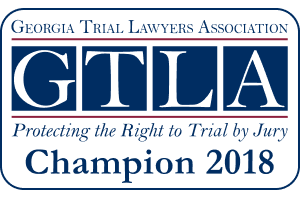Fees and Expenses
Contingent attorney fees – Why are contingent fees the norm in personal injury cases?
Most clients in personal injury and wrongful death cases prefer to hire lawyers on a contingent fee basis. This means that our fee is calculated as a predetermined percentage of the amount we recover for the client through settlement or trial.
Most lawyers handle personal injury cases for contingent fees of 33 1/3% to 40% of the recovery, and sometimes more.
If the client is willing and able to pay all litigation expenses as the case progresses, the fee percentage may be adjusted accordingly. Occasionally we have handled a tort or insurance case on a purely hourly fee basis, with the client paying an adequate retainer for fees and expenses and replenishing it as the case progresses. However, few injury victims are able to do that. There have been rare cases in which we agreed to a lower percentage, such as courtesies to families of clergy, etc.
Why do some people criticize contingent fees?
Imagine the government taking the slingshot away from David and giving it to Goliath. Now you understand “tort reform.”
The contingent fee is perhaps the one device in law that gives injured people, no matter what their financial means, a fighting chance in the courtroom against giant corporations and insurance companies. Small wonder, then, that it has been under almost constant attack for 100 years by corporations and insurance companies that want to deprive average citizens of access to the courts.
This insidious assault is only on the lawyers representing individuals and families. Insurance companies and large corporations would still be able to hire top legal talent, with no limitations, while average American citizens would no longer have such access to adequate representation. Whether the wrongdoer seeks to limit liability or to interfere with fee agreements, its goal remains the same: to deny access to justice to the tens of thousands of Americans who are injured each year due to another’s wrongful acts.
Were it not for the contingent fee, people of the middle class or of low economic means would not be able to have their day in court, a constitutional right which corporations and insurance companies fight hard to eliminate.
Contingency Fees Do Not Increase Litigation
Contrary to propaganda, there is no litigation explosion and personal injury lawsuits do not “clog” the courts. The real increase in litigation has been from businesses suing businesses, not consumers seeking compensation through personal injury litigation. Rather, suits filed by businesses comprise the majority of civil cases filed in court.
Would Fees Be More Reasonable to Plaintiffs Under an Hourly Agreement?
No. On average, hourly fees and contingent fees work out roughly the same, especially when adjusted for the risk incurred by the lawyer who works on a contingent fee and advances the expenses of litigation.
The contingent fee helps protect the integrity of the civil justice system. An hourly fee arrangement can encourage delay, inefficiency, and unnecessary action. We see that every day as insurance defense firms, which are paid by the hour, engage in endless delay tactics while churning their billable hours. A contingent fee, by contrast, provides incentive inducement for a lawyer to be efficient and expeditious.
Even corporations have begun to recognize that hourly billing pushes economic incentives in the wrong direction — weakening rather than strengthening the bonds between performance and pay. It also pushes law firms to a near-obsession with billable hours. And this in turn supports the great unwritten rule of all law practices: that those who want to get ahead must tally up the greatest number of hours. This is dubious economics. The number of hours spent on a matter is no measure of productivity. Productivity is better measured by results, including both outcome and time-frame. Linking the economic incentives to productivity and value is just good business sense.
Contingency Fees are Regulated
The hue and cry about contingent fees is a false one. The suggestion is that somehow the attorney is “ripping off” the unfortunate, such as children, the elderly, or the severely injured.
The facts, however, are that in virtually every instance when a minor is injured, a court must approve an attorney’s fee. This is true when there is a wrongful death or when an individual who has been severely injured needs a guardian and in many other situations.
Further, a court always possesses the power to review attorneys’ fees in personal injury cases, essentially all jurisdictions have fee dispute procedures, and attorneys are urged to “exercise sound judgment in using a percentage in the contingent fee contract that is commensurate with the risk, cost, and effort required.”
The Middle Class and the Contingency Fee
The contingent fee puts the middle class working people on a more equal footing with the wealthy. Eliminating the contingent fee would price the middle class out of the market for justice and would especially disadvantage anyone who is already suffering economically due to injury, disability, or loss of a family breadwinner.
Without the contingent fee system, none but the wealthy and powerful would be able to bear the costs associated with pursuing a claim and receiving just compensation. Worse still, often only those whose negligent conduct causes injury would be able to afford quality legal representation.
The contingent fee system allows access to the courts for middle-class families. This is one of the distinct differences between the United States and countries elsewhere in the world. It is a hallmark of our democratic system.
Contingent fees have been recognized for making it possible for injury victims with strong cases but little economic resources to proceed to trial in situations where the far more financially well-heeled defendant has refused to settle. Refusal to negotiate is a tactic of wealthy corporate defendants and is a risk that corporate defendants involved in numerous lawsuits are sometimes willing to take, but one which a personal injury plaintiff with a single case can hardly ever afford.
The position of the plaintiffs’ attorneys limits the strategic bargaining power of the defendants in personal injury cases, and restores some balance to pretrial negotiations.
If a client wants to discuss an alternative fee structure, we will consider it. However, it is a rare personal injury or wrongful death plaintiff who chooses to be billed by the hour and pay all the costs of litigation on a monthly billing basis.
Expenses in personal injury and wrongful death cases
Every case is different, and the expense budget varies widely among cases. However, some of the typical expenses include:
- Medical records – While we prefer to order records economically in electronic format under the HITECH Act, some hospitals find ways to delay response. If we have to obtain records the old fashioned way, it can be expensive.
- Radiology images – about $10 per CD if in electronic format, very expensive if on film.
- Filing fees and service – budget about $400, more or less, including service by sheriff. This can increase a great deal if a private process server is required.
- Photographs of scene – zero to hundreds.
- Accident reconstruction expert, if needed – about $5,000 to $20,000, depending on complexity (Not required in most cases)
- Video depositions of opposing parties – about $750 to $1,000 each
- Transcripts of client depositions – about $300 each.
- Depositions of treating physicians, including doctors fees, court reporter and videographer – about $2,000 each.
- Medical illustrations – about $900 each.
- Travel for depositions – We fly coach and stay in moderately priced hotels.
- Other expenses in some cases – life care plan experts, economists,
Other expenses may include investigators, skip tracers, nurses, consulting experts, etc.
Since we usually advance expenses, we are generally conservative about spending. But if something has to be done to properly prepare a case, we do it.
Upon settlement, we are reimbursed for our out of pocket case expenses, and pass through the interest charged on our litigation line of credit associated with those expenses.












